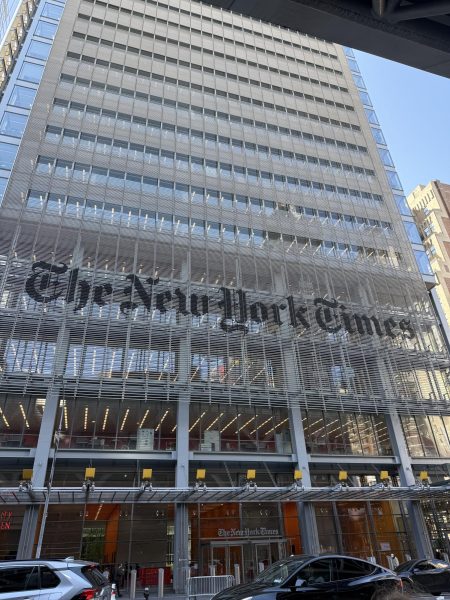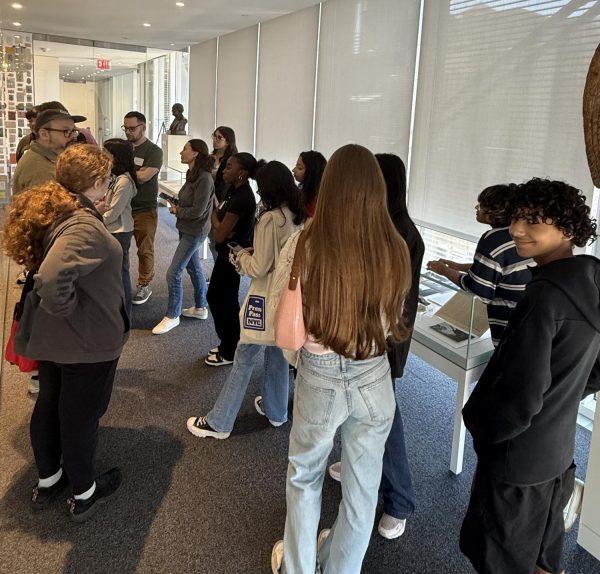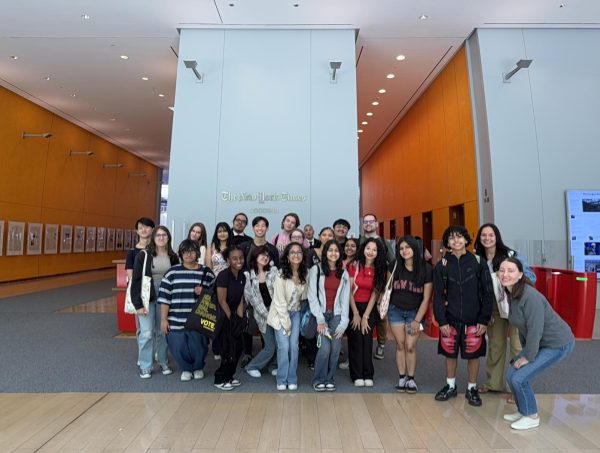Around 15 million subscribers digitally.
Nearly 200 articles published daily, many written inside the walls of a 52-story skyscraper.

A renowned plaza in its honor that we now know to be Times Square.
A visit to The New York Times is a young journalist’s dream.
On Monday, May 19, FHHS’ journalists from The Beacon traveled to The New York Times headquarters, one block west of Times Square in Manhattan. First, Terry Parris Jr., Editor of the “Headway” column at the Times held a Q&A session, detailing his career in journalism as well as the future of news, both digital and in-print.
Headway is still fairly new, and constitutes as solution-oriented journalism. The team reports on issues such as homelessness, gun violence, and public transit issues, with a heavy input on creating positive results for the community. As the reputation of journalists has seemed to sway, especially in recent years, the persistence to seek the truth and impact the community for a positive change remains prevalent for Headway.
Parris’ Q&A session featured personal stories about his own journalism career, from interning and writing articles for $25 a week in college to eventually landing his gig with Headway at the Times, with an abundance of experience in between. The key to success? Say yes to opportunity, especially in the beginning, Parris shared.
As well, Parris shared a few fun facts with The Beacon, specifically mentioning that Times Square is named after the publication itself. The traditional New Years’ Eve ball-drop in Manhattan is also a product of the Times, as their original building was in the heart of the area when they first opened. The current building is a few blocks from the original.
The Q&A was followed by a private, guided tour of the working newsroom, Pulitzer Hall, and the publication’s official museum of artifacts and history.

The newsroom was not nearly as chaotic and loud as what many may have seen on TV; there were about 15-20 journalists. Some were spotted at their cubicles, and some with their laptops at a table near one of the many floor-to-ceiling windows with stunning views of Manhattan. The building was very quiet overall. The workplace still isn’t totally back to pre-COVID times, Parris shared. Journalists are still working from home about 2 days a week, but this will eventually shift back to in-person full time.
The museum room is bordered, chronologically, with display cases of newspapers and trinkets that present historic moments in time, globally and specific to New York. The special room holds the desk of Henry Jarvis Raymond, founder of The New York Times, as well as the original printing press displayed in a safe case. The first printed issue of the publication from 1851 is also on display, with many faded words and very few images.
FHHS journalists left printed copies of April issues of The Beacon and The Bacon to display within the building. There are plans to return to The New York Times building next school year to see how the discussions around journalism stay the same, and even change over time, as we live in a world of “cancel culture,” unreliable news, and social media.
According to Parris, although printed papers are on the decline, the news and journalism as a profession isn’t at all fading away. In fact, the news is even more involved in our lives, as the digital age keeps us connected and updated within seconds. Just take a look at the Times’ 15 million digital subscribers. Current news, local, national, and global, is only a mere swipe away.
